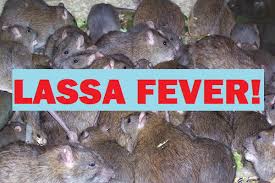
The Nigeria Centre for Disease Control and Prevention (NCDC) has confirmed a rise in Lassa fever cases, with 162 deaths recorded across 21 states as of epidemiological week 35 (Aug. 25–31).
In week 35 alone, 10 new cases were detected in Edo, Ondo, Bauchi, and Taraba states, up from three the previous week.
So far in 2025, Nigeria has reported 7,375 suspected cases and 871 confirmed infections, with a case fatality rate of 18.6%, higher than the 17.1% recorded during the same period in 2024.
Ondo, Bauchi, Edo, Taraba, and Ebonyi remain the country’s hotspots, accounting for 91% of all confirmed cases. Ondo contributed 33%, Bauchi 23%, Edo 18%, Taraba 14%, and Ebonyi 3%. Most patients are aged 21–30, with a male-to-female ratio of 1:0.8.
The NCDC noted that while overall case numbers are lower than last year, deaths remain high due to late presentation, poor health-seeking behaviour linked to treatment costs, and poor sanitation in high-burden communities.
Since January, 23 health workers have been infected, though no new cases were recorded in week 35. To strengthen the response, the NCDC has deployed 10 rapid response teams, boosted surveillance, and distributed medical supplies including ribavirin, PPEs, and sanitisers.
A five-year strategic plan (2025–2029) for Lassa fever control is also in the works.
The agency urged Nigerians, especially in hotspot states, to practice proper hygiene, improve rodent control, and seek early medical care.
Lassa fever, a viral haemorrhagic disease endemic to Nigeria, spreads primarily through food or household items contaminated by infected rats and can also be transmitted person-to-person, particularly in hospitals without strict infection control.
Symptoms include fever, weakness, vomiting and bleeding, with severe cases leading to organ failure.



